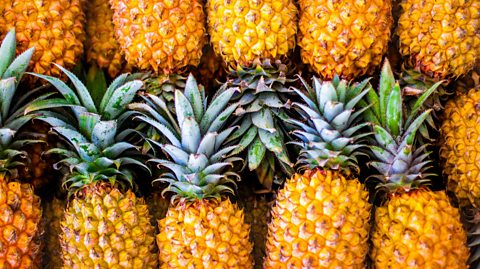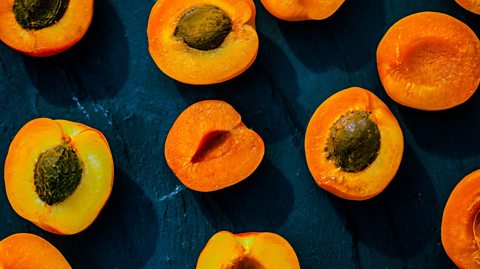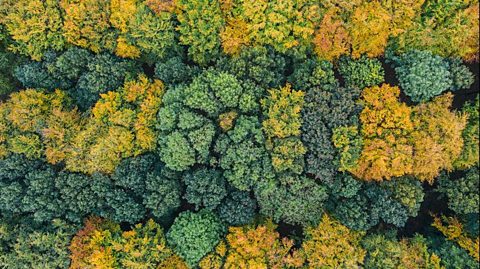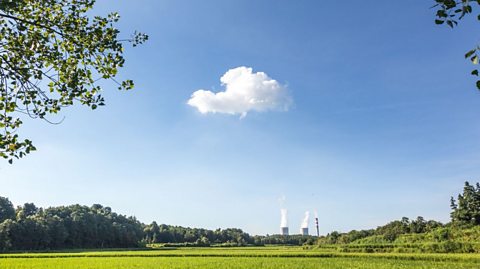What to do with a problem like food waste?
The United Nations Environment Programme (UNEP) put out a report this year that estimates around 931 million tonnes of food waste was generated around the world in 2019. This is having a big impact on our climate - the UNEP says there are estimates to suggest 8-10% of global greenhouse gas emissions can be linked to food waste, from food thrown away in supermarkets to the parts we chuck out at home.
But are there ways of making it less, well, wasteful? Both individuals and companies are finding ways to take the bits that get wasted in production, and the odds and ends we throw away from our kitchen, into useful, beautiful and delicious things - here are four that you may not know about.
Make clothes
When looking at your food waste bin in your kitchen, high fashion is probably the last thing that comes to mind. But innovators across the world are turning the odds and ends weÔÇÖd usually throw away into materials we can wear.
For example, the discarded bits of plants such as coconuts and pineapples can make durable faux leather. The latter makes a fabric called pi├▒a, which originated in the Philippines but can also be found in other places such as Hawaii, Brazil and Indonesia.

To make it, fibres are scraped from the leaves by hand, which are then washed, dried and then woven. This woven fabric is split into two types: bastos which is coarse and strong for rugs and other household items, and liniwan which is much finer and used for more delicate items.
Another fashionable citrus fruit is the humble orange. In Italy, a company is creating silk from its peel. Special tech extracts cellulose after the fruit has been juiced, which can be transformed in to the luxurious fabric.
Make more food
When you're cooking, there are lots of bits that you chop off and get rid of, like peels, ends and wonky bits. But before you go to throw your food waste away, you may want to stop and think about what other edible treats you could make from it. There are plenty of ways you can get creative, such as by making pickles and relishes, or using peels to infuse your water.
But itÔÇÖs not just on individual level that food waste can repurposed. When companies harvest certain crops, theyÔÇÖre often only looking for a certain part of the plant, and the rest gets thrown away.
Take coffee for example - coffee beans are actually seeds, and grow inside a fruit called a coffee cherry. Traditionally these cherries would be discarded once the bean had been removed, but people are now reclaiming this once overlooked husk and using it in their cooking.

The fruits are dried and then ground into a powder which is called coffee flour, but itÔÇÖs used more like a spice.
But it's not just the bits we might think of as inedible that get wasted. Ugly and wonky fruit and veg have a hard time getting sold at supermarkets, and often can be thrown out, even though they're perfectly edible. There are lots of efforts to tackle this however, with some supermarkets discounting them and companies using them in their recipes.
Use in your skincare routine
Skincare has had a bit of a boom over the past couple of years, with more people than ever thinking about their daily routine - on TikTok alone, the hashtag #skincare has more than 38 billion views.
And with this popularity has come an increase in awareness of the types of ingredients we put on our skin. This has led to some people and companies finding innovative ways of using waste to provide the nutrients they think our faces need. For example, you might see ground fruit stones on the ingredients list of your face mask or exfoliator as they are great at scrubbing away dirt and dead skin.

Some companies have even made waste coffee grounds into a cosmetic ingredient. These grounds are full of antioxidants, proteins and skin-friendly acids.
ItÔÇÖs best not to try mixing your own DIY skincare at home though, as cosmetics companies have to meet very strict laws in the UK to make sure their products and ingredients are safe. Mixing your own products can lead to contamination with germs which can ruin your product and irritate your skin.
For gardening and reforesting
Is there anything coffee canÔÇÖt do?
Researchers at universities in Zurich and Hawaii have found that used coffee grounds can help boost forest recovery on lands that were once used for agriculture.

Their paper published earlier this year found that after just two years of being treated with coffee pulp, the area they studied in Costa Rica had 80% more canopy cover compared to 20% in a similar sized area that hadnÔÇÖt been treated with coffee waste.
But itÔÇÖs not just big picture planting that coffee is potentially good for - coffee is often used in gardening. According to the Royal Horticultural Society, it can either be used in small quantities around plants, or composted before adding to the garden.
How much do you really know about climate change?
We are always hearing about it in the news, but have you been paying attention?

Myth-busting food origin stories
Chocolate chip cookies, crisps and Caesar salad all have legendary histories, but are they true?

What would the world be like without forests?
Deforestation is happening all over the world, but what would happen if we ran out forest altogether?
